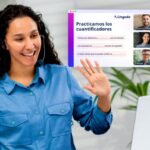Experiential learning plays a crucial role in medical education, particularly when it comes to mastering complex skills such as differential diagnoses. The ability to accurately and efficiently differentiate between various conditions is a cornerstone of clinical practice. Recognizing the evolving landscape of education and the need for flexible learning environments, innovative approaches to experiential learning, especially in online formats, have become increasingly important. This article explores the methods employed to successfully transition experiential learning for differential diagnoses into an online environment, ensuring medical students receive robust training regardless of location.
The foundation of this online adaptation was built upon securing institutional support and confirming feasibility. Faculty consensus was paramount; educators were consulted and agreed upon allocating dedicated time for weekly online educational sessions. This commitment, while acknowledging a potential reduction in traditional clinical hours, was grounded in the acknowledged prior successes of experiential learning methodologies. A consistent weekly schedule was established to accommodate students across four time zones. This involved synchronizing online sessions with local in-person experiential learning activities, allowing for the shared use of standardized patients (SPs) and faculty, thereby optimizing resource utilization. The financial implication of this shift included allocating resources for additional SP time, recognizing their vital role in delivering authentic experiential learning scenarios focused on differential diagnoses.
Technological infrastructure was the next critical element. Reliable, high-speed internet access and personal computing devices equipped with cameras, microphones, and speakers were essential for all participants – faculty, SPs, and students. An initial assessment confirmed that students and faculty already possessed the necessary equipment. To enhance the simulation environment, webcams were installed in the simulation center’s patient interview rooms. This relatively minor infrastructural investment ensured a consistent and professional environment for the SPs delivering the experiential scenarios online. Leveraging the existing institutional Google Suite platform streamlined the logistical aspects of online learning. Google Suite facilitated the scheduling of time-zone-adjusted video conferencing links. For each clinical rotation, students received consolidated calendar invites for group discussions and individual invites for interviews and feedback sessions. All learning materials were digitized, and assessment data was managed through an online database, providing students with immediate access to performance feedback, crucial for iterative learning and improvement in differential diagnosis skills.
With the groundwork laid in terms of support and technology, the core experiential learning activities were adapted for the online format. The pre-briefing phase, designed to establish abstract conceptualization, transitioned from in-person meetings to synchronous video teleconferences for remote students. These sessions, involving approximately ten students and one faculty member per rotation, fostered interactive discussion. The chat feature within the video conferencing platform was strategically utilized to encourage simultaneous participation from multiple students. For instance, students could concurrently submit written responses outlining their initial diagnostic hypotheses or concerns about communication, which were then saved and used to stimulate deeper discussion during the debriefing phase, specifically around the nuances of differential diagnoses.
The active experimentation phase involved students conducting 20-minute interviews with SPs via individual video conference links. Half of the students engaged in these interviews while the other half participated in online didactics. SPs utilized the webcams in the simulation center, while students used their personal laptops from their clerkship sites. Following each interview, students were tasked with documenting a clinical note, mirroring the Step 2 Clinical Skills exam format, within a ten-minute timeframe within the simulation center’s learning management system. Concurrently, SPs completed online assessment forms evaluating the student’s communication and history-gathering skills, providing immediate feedback on aspects critical to forming accurate differential diagnoses.
After completing their notes, students rejoined their individual video conference links to receive direct feedback from the SPs regarding their communication strategies. This concrete experience was further enhanced by providing students dedicated time to review their performance data on communication and history-gathering, and to self-assess their notes using a digital rubric. During this period, the students who initially engaged in online didactics began their SP interviews, while those who had just completed their performance synthesis observed a peer’s interview. This peer observation element was facilitated by inviting the “observing” student to the “interviewing” student’s video link, with the observer’s audio and video muted to prevent disruption. The groups then rotated through these activities, ensuring all students experienced both interviewing and observing, alongside didactic learning.
The reflective observation and abstract conceptualization phases culminated in a group debriefing session via the shared video conference link. Prior to this debrief, students were given time to synthesize their individual performance data and reflect on their diagnostic process. During the debrief, students shared their observations, fostering a collaborative environment to develop generalized solutions to common challenges encountered in diagnostic interviews. Crucially, the discussion focused on how observations and findings from their simulated interviews directly informed their clinical formulation, differential diagnoses, and subsequent treatment plan development. To ensure continuous improvement, students were asked to identify and document specific, actionable goals for future development, along with potential strategies to achieve these goals, within the chat feature. These personalized goals were then emailed to the students post-session, serving as a reminder and a guide for focused skill enhancement throughout their clinical practice in real patient encounters.
Continuous refinement of this online experiential learning model was achieved through ongoing feedback collection from students, faculty, site directors, SPs, and simulation center administrators. This iterative feedback loop allowed for data-driven adjustments and improvements to the program. Faculty development was also strategically implemented through “co-teaching” sessions. New faculty members would observe experienced faculty, then co-lead sessions before independently facilitating them. This mentorship approach ensured consistent quality and effective delivery of the online experiential learning experience. The success of this model led to distant site faculty expressing interest in facilitating these sessions themselves. Extending the “co-teaching” approach to distant faculty enabled their participation in tele-simulation, further enhancing program cohesion and standardization across geographically dispersed learning environments. This collaborative and iterative approach ensured the online experiential learning program remained dynamic, responsive to feedback, and consistently effective in training medical students in the critical skill of differential diagnoses.
